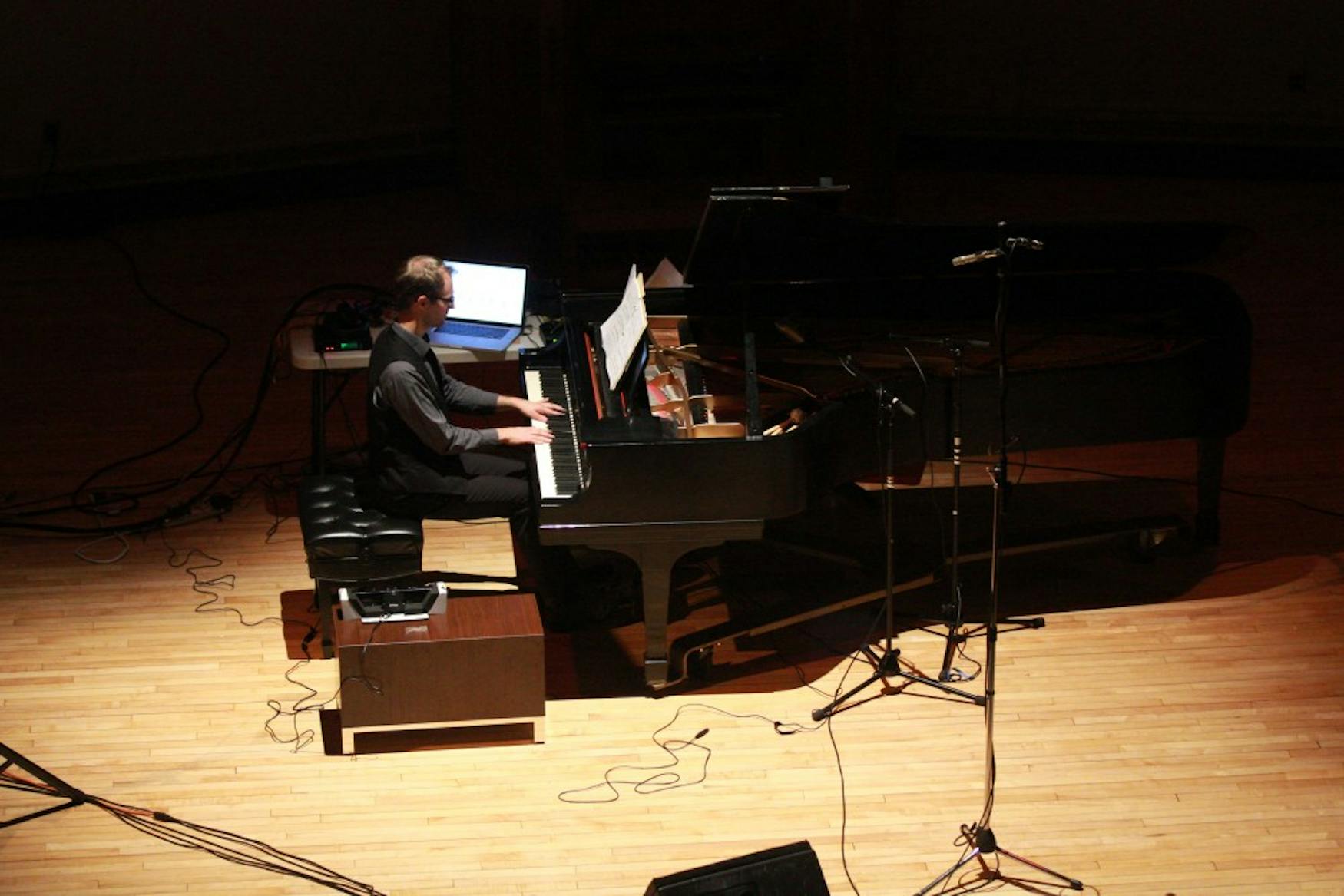Performance shows off music for the modern age
The latest installment of Brandeis’ Concert Series featured expansive mythology references, modified lyric poetry and even a few walrus noises. Saturday night’s concert, “The Electro-Acoustic Piano,” was part of coordinator and performer Keith Kirchoff’s ongoing project that helps redefine modern music by commissioning new works for technology and the piano. Kirchoff seeks out artists to commission pieces for the project and then performs the pieces throughout his tour. Since 2009, the Electro-Acoustic Piano project has commissioned over 20 different composers, such as Joshua Clausen, Marisol Jiminez and Benjamin Dean Taylor.
A large group of concertgoers at the Slosberg Recital Hall was treated to eight musical works and two world premieres, all performed by Kirchoff. The works were composed for the piano, Xbox Kinect and electronic music programs; some pieces incorporated all three of these “instruments.” The composers used these different forms of technology to demonstrate how the piano can interact with newer modes of music. Kirchoff’s EAPiano tour has hit six countries so far and is touring American university campuses until April 17.
One standout from the night was Peter Van Zandt Lane’s ’13 “Studies in Momentum” from 2014. As its name suggests, the work takes inspiration from physics and movement. The composition’s five etudes had titles that riffed off terms from these disciplines, with names like “II. Projectile Motion” and “IV. Planck’s Waltz.”
Composer and alumnus Lane attended the show and even gave an introduction for his piece. In his introduction to “Studies in Momentum,” Lane explained that each etude focused on a single digital process and musical technique. Lane took portions of sounds and reused them, play with chords, stability and key changes; in the fourth etude he slowed down sound playback in order to create decaying echoes, and the fifth etude incorporated all of the above techniques. The result was that “Studies in Momentum” started out like an acoustic version of your favorite piano-based pop song with repeated chords and notes and gradually changed its mood. The key changes, pauses and echoing sounds affected a desperate feeling that seemed to grow as the piece went on.
Lane has explored the theme of movement in the past with his politically inspired dance and music collaboration: HackPolitik. Although Kirchoff did not perform the piece, the clear accents and unexpected pauses in “Studies in Momentum” mimicked HackPolitick’s style and made it clear that Lane had retained his fascination with how music and movement’s interplay could inform a theme.
The piece with the most explicit narrative was Steven Rick’s “Medusa in Fragments” from 2011. The composition retold the Greek monster Medusa’s myth from her perspective, casting the villainess in a sympathetic light. As Kirchoff played piano, a screen lowered and a video of Medusa—gifted soprano Jennifer Welch-Babidge—began playing. Medusa claimed she was wrongfully punished for taking advantage of the opportunities available to her, and she called out little people who get frustrated by little problems. The video’s sound traveled from the back of the room to the front by way of surround-sound speakers, making the occasional thunder noises seem authentic and creating the effect that Medusa’s voice was rippling through the walls. The audience barely noticed the piano or even Kirchoff speaking the other characters’ lines—he became an accessory to the video, like the soundtrack in a movie.
In contrast, Christopher Jette’s “utuquq” (2014) placed the spotlight solely on Kirchoff as he navigated his way through different instruments. The work blended electronic music computer programs, a reconfigured Xbox Kinect and the piano to create a variety of different sounds. Kirchoff’s left hand controlled the piano keys while his right hand gestured over the Kinect to prompt pre-recorded sounds. Different gestures elicited different sounds, which included thudding walrus noises and the clanking of ice breaking. In his introduction for the piece, Kirchoff drew attention to the notion of dimensional space in the work. While the Kinect made music by harnessing three-dimensional space, music on a piano is mostly a two-dimensional movement back and forth over the keys.
The EAPiano project presents an intriguing example of how modernity influences our perception and creation of music and how classical instruments relate to other music media. The concert tied this idea to larger notions about movement, the role of the performer and the audience’s relation to the sound. Redefining an industry and its conventions surely has its challenges, but this concert made it look easy.



Please note All comments are eligible for publication in The Justice.